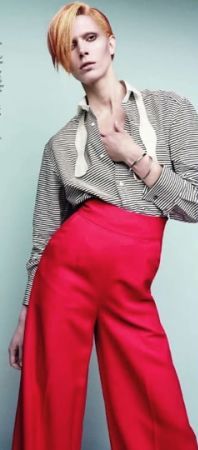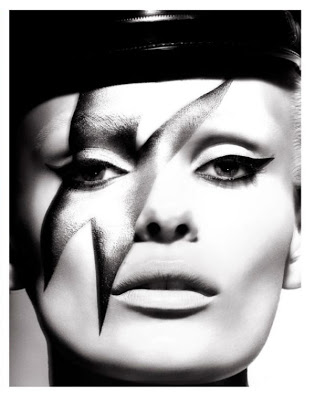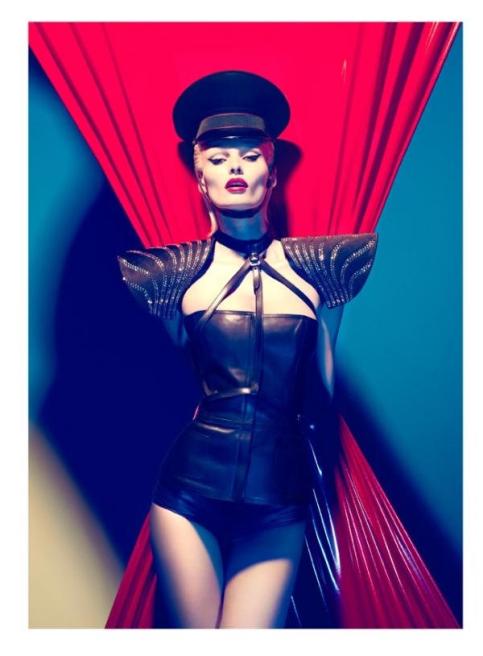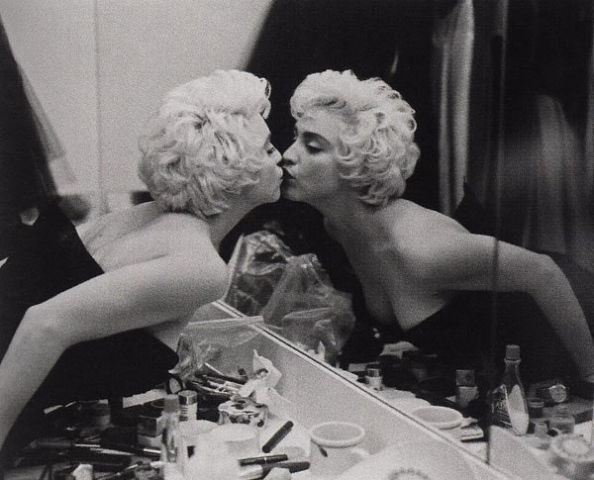“Visionaire first featured the designs of Lee Alexander McQueen in 1996 and since that time, he has been a continuous inspiration and a presence in Visionaire. McQueen’s special commissions are among our most treasured contributions. His daring designs and challenging ideas of fashion have consistently excited and provoked us.”
Stephen Gan, Cecilia Dean and James Kaliardos
Magazine’s founders
 Visionaire 58 SPIRIT, a limited-edition of 1500 numbered copies
Visionaire 58 SPIRIT, a limited-edition of 1500 numbered copies
Protected in a modernly-chic white box, the tri-annual fashion and art publication Visionaire has released its tribute to the life and work of late fashion designer and icon Lee Alexander McQueen. The issue includes a collection of photographs by Nick Knight, Lady Gaga, Steven Klein, Steven Meisel, Inez van Lamsweerde & Vinoodh Matadin, Mario Testino, Mario Sorrenti and more, each printed on a piece of pulp paper embedded with wildflower seeds that will actually blossom if you plant them, water them and give them enough sun. However, with its striking images and homage to a true fashion legacy, we don’t intend to plant the pages anytime soon. Plus, the case features a metalized brocade detail from the designer’s final collection. All in all, a very romantic collector’s piece.
Several years before issue 58 came to be (2003), Alexander “Lee” McQueen came to the Visionaire office to discuss collaborating on an issue that ultimately never happened. One day, the staff was discussing a potential issue printed on seeded paper, and the next day, news came that McQueen, one of the most brilliant creative minds of our time, had passed away. The team took this as a sign and dedicated SPIRIT to him. The issue set out to commemorate McQueen’s life and career by publishing the imagery that had defined it.
 Alexander McQueen by Steven Klein
Alexander McQueen by Steven Klein
 Illustration by François Berthoud
Illustration by François Berthoud
 Mert Alas and Marcus Piggott for Visionaire 29 WOMAN
Mert Alas and Marcus Piggott for Visionaire 29 WOMAN
 Mert Alas and Marcus Piggott for Visionaire 26 FANTASY
Mert Alas and Marcus Piggott for Visionaire 26 FANTASY
 Horst Diekgerdes and Camille Bidault Waddington for Visionaire 25 VISIONARY
Horst Diekgerdes and Camille Bidault Waddington for Visionaire 25 VISIONARY
 Alexander McQueen and Phil Pointer for Visionaire 24 LIGHT
Alexander McQueen and Phil Pointer for Visionaire 24 LIGHT
 Nick Knight for Visionaire 20 COMME DES GARÇONS
Nick Knight for Visionaire 20 COMME DES GARÇONS
 Steven Klein for Visionaire 18 FASHION SPECIAL
Steven Klein for Visionaire 18 FASHION SPECIAL
 Hannelore Knuts as David Bowie in fashion editorial Rock the House, photographed by Steven Meisel. US Vogue, 2001
Hannelore Knuts as David Bowie in fashion editorial Rock the House, photographed by Steven Meisel. US Vogue, 2001 Kate Moss portraying Bowie’s Aladdin Sane for Vogue UK. May 2003. Photo by Nick Knight
Kate Moss portraying Bowie’s Aladdin Sane for Vogue UK. May 2003. Photo by Nick Knight
 Raquel Zimmermann in Girl Meets Boy by David Sims, June 2010
Raquel Zimmermann in Girl Meets Boy by David Sims, June 2010 Editorial: Androgyne
Editorial: Androgyne

 Edita Vilkeviciute in Numéro #123rd issue, May 2011
Edita Vilkeviciute in Numéro #123rd issue, May 2011 Kate Moss portraying Ziggy Stardust for Vogue Paris. December 2011/January 2012. Photo by Alas & Piggott
Kate Moss portraying Ziggy Stardust for Vogue Paris. December 2011/January 2012. Photo by Alas & Piggott

 Daphne Guinness. Photo by Brian Adams for German Vogue, January 2013 issue
Daphne Guinness. Photo by Brian Adams for German Vogue, January 2013 issue





















































